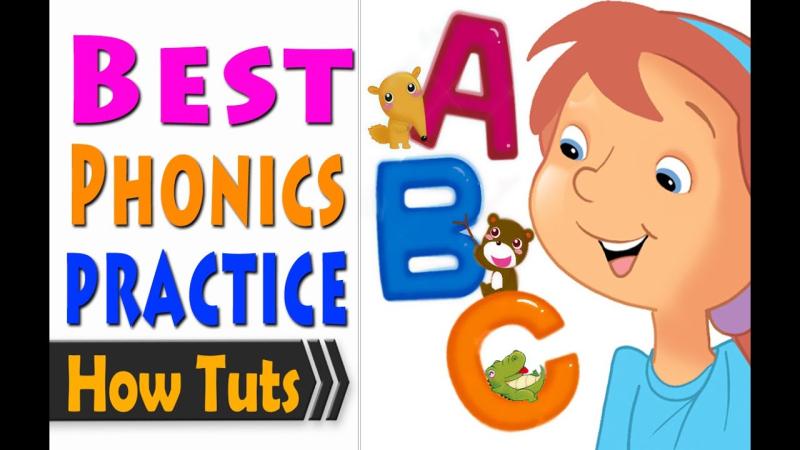How to teach your child to read using phonics?
Teaching reading with phonics is a systematic approach that focuses on connecting sounds (phonemes) to written letters or letter combinations (graphemes). Here's a guide for parents on how to teach their child to read using phonics:
Start with Phonemic Awareness:
- Before introducing letters, help your child develop phonemic awareness. This involves recognizing and manipulating individual sounds in spoken words. Play rhyming games, identify beginning and ending sounds, and practice blending and segmenting sounds.
Introduce Letter Sounds:
- Teach your child the sounds associated with each letter. Begin with the most common consonant and short vowel sounds. Use rhymes, songs, and visual aids to make learning fun and engaging.
Teach Letter Formation:
- Show your child how to write each letter and practice forming them together. Use large letters on paper or a whiteboard. Emphasize proper pencil grip and letter formation.
Introduce Blending:
- Teach your child how to blend individual sounds together to form words. Start with simple, three-letter words. For example, use the sounds /c/, /a/, /t/ to form the word "cat."
Practice Segmenting:
- Reverse the process and teach your child to segment words into individual sounds. This skill is essential for spelling. For example, ask your child to say each sound in the word "dog."
Use Decodable Books:
- Provide decodable books that contain words your child can sound out using their phonics knowledge. Gradually increase the complexity of the words as their skills improve.
Engage in Word Games:
- Play word games that involve blending and segmenting. Games like "I Spy," where your child identifies objects based on initial sounds, can be both educational and enjoyable.
Build Sight Words:
- While phonics is crucial, also introduce high-frequency sight words that don't follow regular phonetic rules. Use flashcards, games, and repetition to reinforce these words.
Read Aloud Together:
- Read aloud to your child regularly. Point to words as you read, emphasizing the connection between spoken and written language. Encourage your child to follow along with their finger.
Encourage Independent Reading:
- Gradually transition to independent reading. Provide books that match your child's current reading level, allowing them to apply their phonics skills with confidence.
Celebrate Progress:
- Celebrate small achievements and progress. Positive reinforcement helps create a positive association with reading.
Be Patient and Supportive:
- Every child learns at their own pace. Be patient and supportive, creating a positive and encouraging learning environment. Offer praise and encouragement to boost confidence.
Remember that consistency is key, and incorporating phonics into everyday activities can make learning more natural for your child. Tailor your approach based on your child's interests and learning style, and make the process enjoyable to foster a love for reading.
What are the steps for teaching a child to read using phonics?
English content without images:
What are the steps for teaching a child to read using phonics?
Phonics is an effective method for teaching children to read by sounding out words. Here's a step-by-step guide to using phonics for young learners:
Step 1: Play with sounds!
Phonemic awareness: Before introducing letters, focus on helping children identify and manipulate sounds in spoken language. Play rhyming games, sing songs with repetitive sounds, and clap or tap syllables in spoken words.
Letter sounds: Introduce individual letter sounds (phonemes) through songs, poems, and picture books that highlight specific sounds. For example, sing the alphabet song while emphasizing individual sounds instead of reciting letter names.
Step 2: Letter introduction:
Focus on consonants: Start with simple consonant sounds like /p/, /b/, /t/, and /m/. Use flashcards, charts, or manipulatives like playdough to make learning fun and interactive.
Connect sounds to letters: Show children how each letter symbol represents a specific sound. Make silly noises, use funny voices, or create actions to help them remember the associations.
Step 3: Blending sounds:
Start with CVC words: Once children know a few consonant sounds, introduce simple CVC (consonant-vowel-consonant) words like "cat," "mat," and "pin." Say the sounds slowly and deliberately, then blend them together to form the word.
Use blending activities: Play games like "I Spy" with CVC words, or build CVC words with letter tiles or magnetic letters.
Step 4: Expanding knowledge:
Introduce vowel sounds: Gradually introduce short vowel sounds like /a/, /e/, /i/, /o/, and /u/. Follow the same approach of connecting sounds to symbols and practicing blending for CVC words with different vowel sounds.
Move to more complex words: Once children master CVC words, move on to CV, CCV, and consonant blends like "ch," "sh," and "tr."
Step 5: Practice, practice, practice!
Read together: Make reading a daily routine. Choose engaging books with colorful illustrations and simple texts that match the child's phonics level. Take turns reading, pointing to letters, and sounding out words together.
Play reading games: Make learning fun with interactive games like bingo, memory match, or word building activities using letter tiles or magnetic letters.
Remember:
Be patient and encouraging: Learning to read takes time and effort. Celebrate small victories and encourage children to keep practicing.
Make it fun and engaging: Keep learning activities playful and avoid pressure. Children learn best through positive experiences.
Tailor the approach: Adjust the pace and complexity of activities based on the child's individual needs and learning style.
By following these steps and making phonics learning enjoyable, you can help your child develop a strong foundation for reading success!













